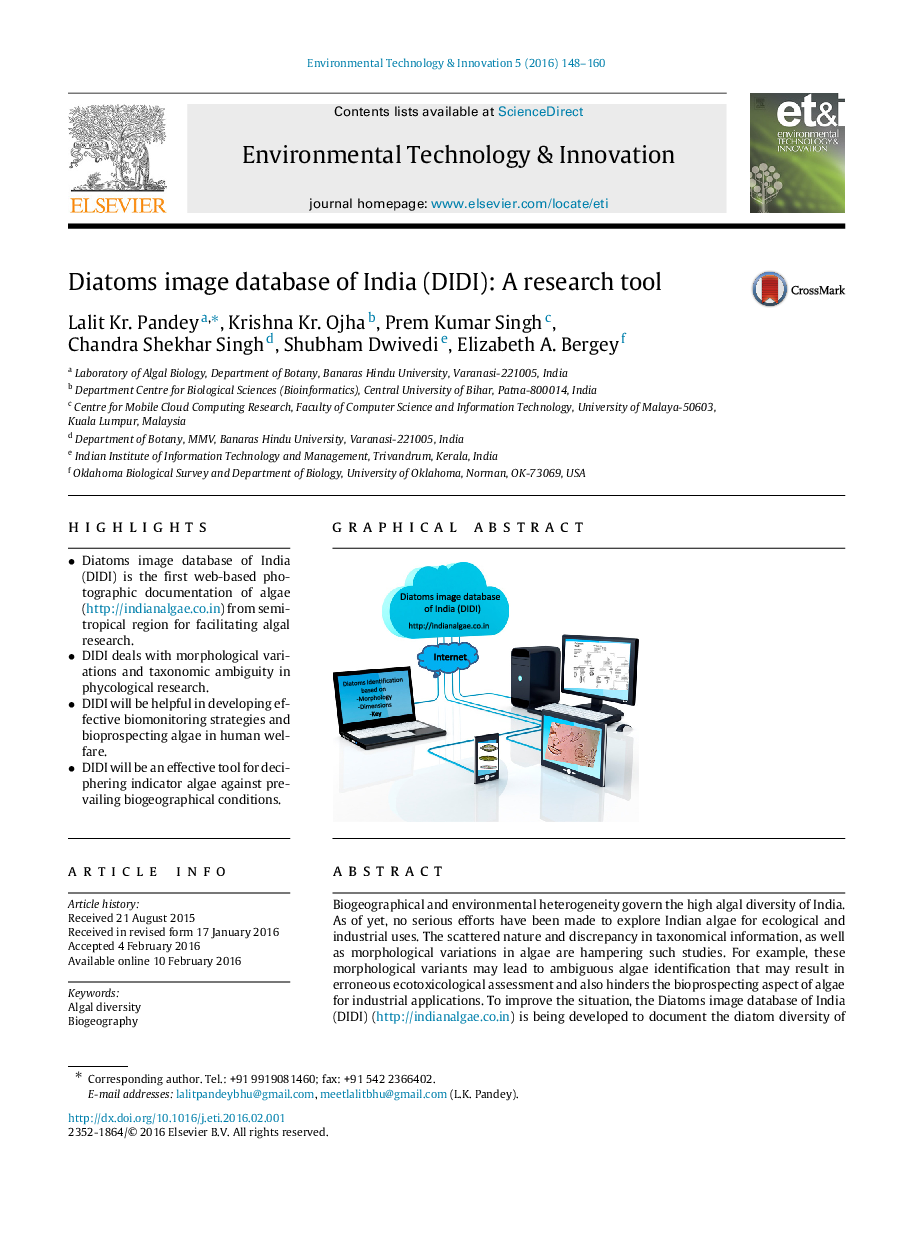| Article ID | Journal | Published Year | Pages | File Type |
|---|---|---|---|---|
| 4428203 | Environmental Technology & Innovation | 2016 | 13 Pages |
•Diatoms image database of India (DIDI) is the first web-based photographic documentation of algae (http://indianalgae.co.in) from semi-tropical region for facilitating algal research.•DIDI deals with morphological variations and taxonomic ambiguity in phycological research.•DIDI will be helpful in developing effective biomonitoring strategies and bioprospecting algae in human welfare.•DIDI will be an effective tool for deciphering indicator algae against prevailing biogeographical conditions.
Biogeographical and environmental heterogeneity govern the high algal diversity of India. As of yet, no serious efforts have been made to explore Indian algae for ecological and industrial uses. The scattered nature and discrepancy in taxonomical information, as well as morphological variations in algae are hampering such studies. For example, these morphological variants may lead to ambiguous algae identification that may result in erroneous ecotoxicological assessment and also hinders the bioprospecting aspect of algae for industrial applications. To improve the situation, the Diatoms image database of India (DIDI) (http://indianalgae.co.in) is being developed to document the diatom diversity of India. In addition to identification aids and diatom images, the web site also includes data for environmental variables. Our database is the first web-based photographic documentation of diatoms from the sub-tropical region. DIDI is originally based on seven years of rigorous collection, examination and identification of the algal flora from different parts of India. All the diatom images given in the database are validated using Indian monographs, published papers and online image databases.
Graphical abstractFigure optionsDownload full-size imageDownload as PowerPoint slide
